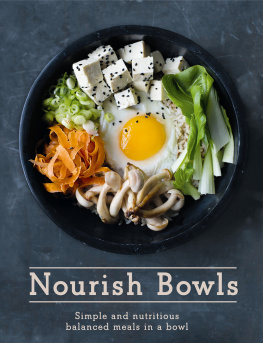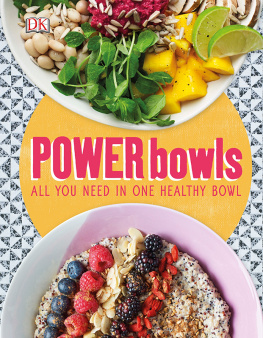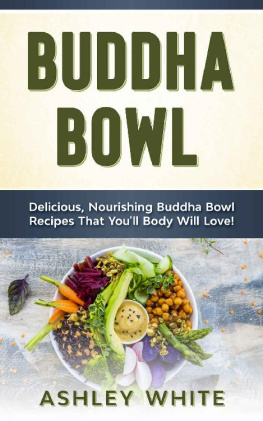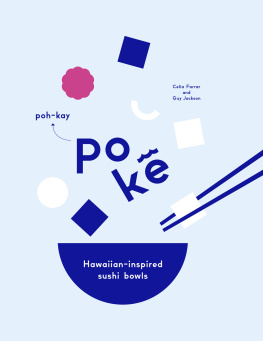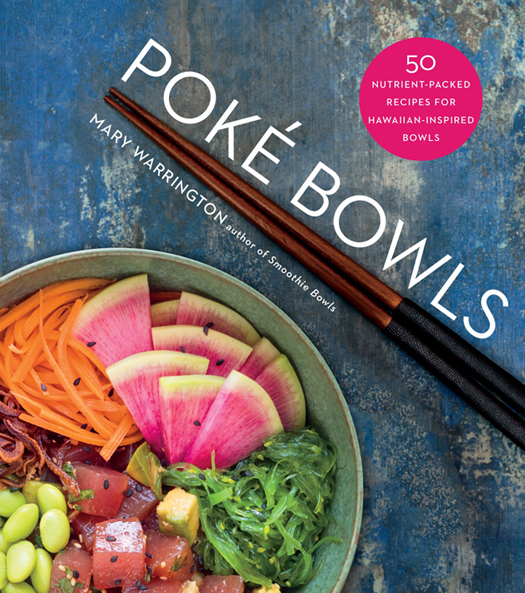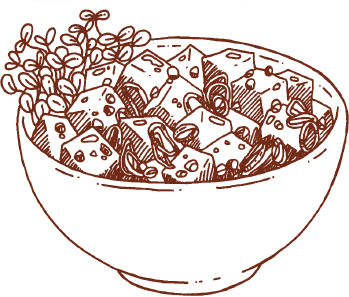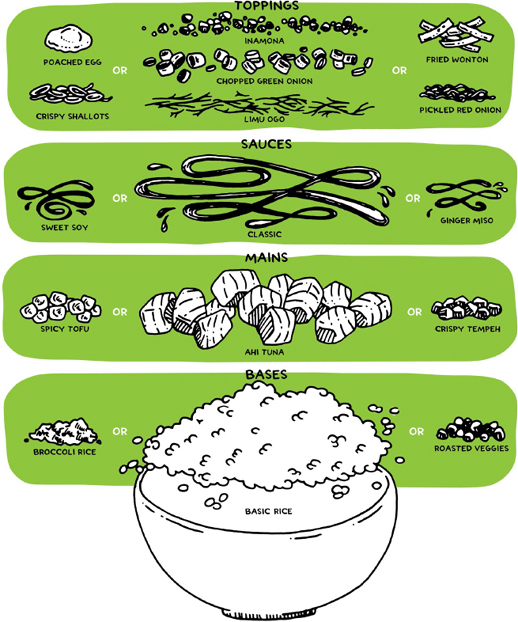STERLING EPICURE and the distinctive Sterling Epicure logo are registered trademarks of Sterling Publishing Co., Inc. Interior text and photos 2018 Mary Warrington Cover and illustrations 2018 Sterling Publishing Co., Inc. All rights reserved. No part of this publication may be reproduced, stored in a retrieval system, or transmitted in any form or by any means (including electronic, mechanical, photocopying, recording, or otherwise) without prior written permission from the publisher. ISBN 978-1-4549-2680-1 For information about custom editions, special sales, and premium and corporate purchases, please contact Sterling Special Sales at 800-805-5489 or . sterlingpublishing.com Cover design by David Ter-Avanesyan Interior design by Gavin Motnyk Illustrations by Sara Becan
INTRODUCTION
If youve been to any of the Hawaiian Islands, youve likely seen pokecubed raw fish tossed in one of many sauce optionsavailable in restaurants and in grocery stores.
My first stop whenever I visit Hawaii is Foodland, a local grocery store, where I buy a poke bowl: white rice topped with a huge scoop of classic ahi poke. While poke has been a staple in Hawaiian food culture for decades, its popularity has recently spread to the mainland United States, where poke restaurants are popping up with increased frequency and creativity. This book aims to spark your imagination and provide a range of recipes, from traditional to completely new and unusual, for making your own poke bowls at home. Youll find individual recipes for sauces, toppings, and bases, along with recipes for assembling a complete bowl.
History
In Hawaiian,
poke (pronounced PO-kay) means to slice or cutwhich could refer to anything being cut into pieces. More commonly though, the word
poke is used in reference to sliced raw fish, often dressed with a simple marinade and tossed with green onions and crushed kukui nuts.
Poke began as a way for fishermen to use up scraps of uncooked fishsometimes seasoned only with sea salt and combined with any leftover ingredients on hand, such as nuts and seaweed. Modern poke flavors have been heavily influenced by Japanese cuisine and often incorporate ingredients like soy sauce, wasabi, sesame oil, and more.
Types of Fish
Poke can be made from a variety of fish, but most commonly youll find ahi tuna (also called yellowfin tuna or bigeye tuna), salmon, hamachi, albacore, and tako (octopus). Generally these fish are served raw, with the exception of tako, which is cooked. You can sear or cook any of the fish used in your poke bowl, although weve only included one cooked-fish recipe in the book, along with a recipe for cured salmon. In the following recipes, well use all the fish mentioned above, in addition to shrimp, vegetables, tofu, and tempeh, a fermented soybean cake originally from Indonesia.
Each of the recipes in this book calls for a specific type of fish, which can also be easily substituted with vegetables or meat alternatives. The sauces, toppings, and bases are wonderfully interchangeable with any of these options. Following is a brief description of what the various raw fish options are like, in case youre unsure where to start.
Ahi (Yellowfin Tuna or Bigeye Tuna)
Bigeye is known as the most flavorful tuna variety, with its cousin yellowfin coming in second. Fresh ahi is deep red in color and is best consumed raw or lightly seared.
Salmon
There are numerous species of salmon around the world, and all can be used for poke.
Salmon
There are numerous species of salmon around the world, and all can be used for poke.
Salmon can be wild caught or farm raised, and depending on origin it can vary from orange to deep red in hue. It is a full-flavored, high-fat fish with a firm texture. For beginner poke eaters, salmon is often the most approachable fish due to its familiarity.
Albacore
Albacore was the original fish for the tuna canning industry and remains its cornerstone to this day. Albacore has a milder flavor than salmon or ahi, along with a softer pink color. The milder flavor of albacore is offset by a higher fat content that lends it a unique richness.
It is not as firm as ahi, but has a meatier texture and big flakes.
Hamachi (Yellowtail)
Often referred to as yellowtail tuna, this fish is not actually a tuna. More pale pink in color than albacore, Hamachi has a sweet flavor and large, firm flakes. Hamachi is known for its smooth texture.
Tako (Octopus)
Octopus is more difficult than other fish to prepare as sashimithe generic Japanese term for raw fish. Ubiquitous in its preparation is the need to tenderize the meat, which is frequently described as tough and rubbery in its raw form.
Cooks will often freeze octopus before boiling to jump-start the tenderizing process. When served raw, it is sliced very thin to offset the rubbery texture.
Quality of Fish
Although this applies to any ingredient included in this book, make sure to get the freshest possible high-quality sushi/sashimi-gradeHigh-quality fish should be vibrant and colorful and have a mild smell. If it looks cloudy or smells fishy, its probably not the best.
Anatomy of a Poke Bowl
To construct a poke bowl, you really need only two things: a base and a main (traditionally, seafood poke).
Bases
The classic poke bowl base is white rice, traditionally cooked in massive rice cookers all over Hawaii, scooped generously into a bowl, and topped with the poke of your choice.
Bases
The classic poke bowl base is white rice, traditionally cooked in massive rice cookers all over Hawaii, scooped generously into a bowl, and topped with the poke of your choice.
Delving into how to make the best rice could fill up an entire book on its own, so this book will leave rice-cooking mostly up to you to figure out. Anything beyond basic grain preparation is included here. Youll also find some nontraditional base ideasfrom noodles to mixed greens to grain alternatives. These bases are interchangeable in the bowl recipes, so feel free to use your favorite base in a recipe that might not call for it.



